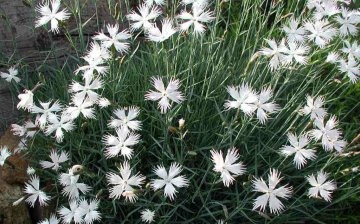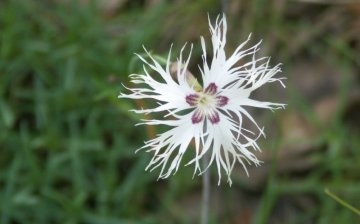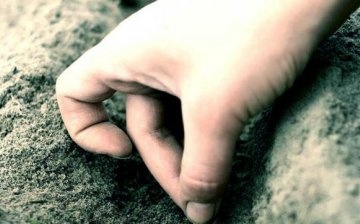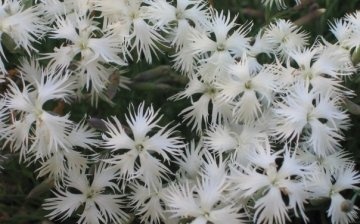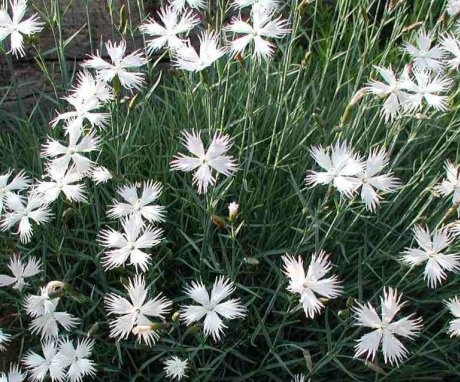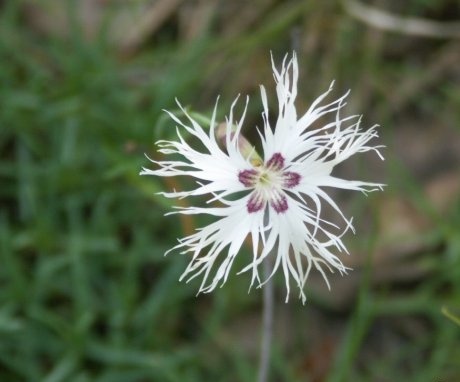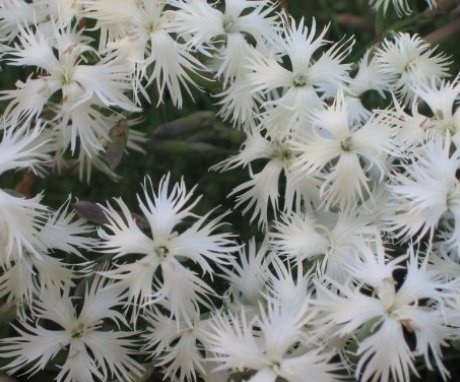How to grow a sand carnation in a garden, how is it useful
Sandy carnation differs in appearance from other types of carnation. And caring for her is just as easy.
Content:
Features of sand carnation
Sand carnation is a North European species. Sand carnation prefers to grow on sands, in meadows, in dry forests and pine forests, along rivers and tributaries, on poor soils, does not like dampness.
Characteristic features of a carnation:
- Dense turf grows from the perennial, the shoots are shortened, the leaves are densely located on them.
- There are several flowers on each stem, the height of the stem ranges from 10 to 30 cm.
- Erect shoots or ascending reproductive. Leaves are linear, narrow, have a bluish tint.
- The flowers are medium in size, up to 3 cm in diameter, the petals are white or pink, fragrant.
- The flowering period lasts from July to September, reproduction is carried out by seeds, you can use the vegetative method, but it is ineffective.
- A distinctive feature of the sand carnation is its flower, its petals are divided into threadlike lobes, resembling threads of a fringe.
- The outer side of the petals has hairs and dots or one green spot.
Sometimes you can see the fruiting of a carnation. This rarely happens, since not all insects can pollinate flowers, but only long-proboscis.
Sand carnation is widespread for decorating rock gardens, curbs, supporting walls, rocky areas.
A widespread variety in the "Nostalgia" floriculture. It grows up to 30 cm, its flowers are white, also fringed, the middle is yellow. The most abundant flowering period is in June and July. The flower gives off a pleasant, sharp aroma.
Carnation care
Sand carnation requires special conditions for growing, having provided them, you will need minimal care. Like many other plants, cloves do not like weeds, they need to be watered and fertilized on time during the period of active growth.
Humus or complex mineral fertilizers are taken as top dressing. If the variety implies long, weak stems, then they are tied up. Carnations are planted in a sunny area. Flowers do not tolerate stagnant water, dampness, high humidity.
The soil may be poor, but cloves on fertilized with neutral acidity will feel better.
As for the choice of soil, it will do:
- Sandy loam.
- Loamy.
- Peat.
To reduce acidity, dolomite flour is added to the soil, then the soil is saturated with magnesium. The flower does not tolerate heavy soil. To facilitate it, peat or river sand is added, if this is not done there is a risk that the carnation will not bloom.
Fertilizer is applied before planting and during the period of active growth. Potassium is used before planting. It is necessary to pay attention that there is no chlorine in the fertilizer, this can destroy the flower.
For self-preparation of the soil, peat, river sand and sod land are used.
Mineral fertilizers are added to the same mixture, preferably nitrophosphate. In the autumn period, when it will be necessary to dig up the soil, manure is placed in it, but always stale.
Reproduction and cultivation
Sowing cloves begins after spring frosts, when the threat of a cold snap disappears. The best period is May. Distance between seeds should be 1 cm, at least 10 cm between rows. It is better to choose fresh seeds. Some gardeners recommend sowing in the winter, that is, at the end of October. You need to prepare the beds in advance.
The plant is transferred to a permanent place in early summer or autumn, it all depends on the characteristics of the region and variety.
Stratification is also carried out, the seeds are laid out in wet sand, in a warm room they should stand for about a week, and then two more in the fresh cool air. After that, they can be sown to obtain seedlings. If the planting of carnations will be carried out in late spring, then they begin to plant seeds for seedlings in early March.
For this you need:
- Prepare a mixture of turf, sand, and peat or any other nutrient soil.
- All this must be well calcined in order to destroy the parasites.
- The mixture is laid out in containers, the seeds are moved there, sprinkled with sand a few millimeters.
- The pots are covered with foil to create a greenhouse effect; several holes are made in the foil for oxygen to pass through.
- Optimum temperature indoors for good seed germination - 18 degrees.
- When the first shoots appear, the temperature drops to 12 degrees.
- The room should be well lit.
- If there is a phytolamp or a fluorescent lamp, then using them for highlighting will only benefit future carnations.
- Seedlings can be watered, but not too often.
- Too much water can lead to black leg disease.
- You can get rid of it only by removing the diseased seedling.
You can dive seedlings after the appearance of at least 2 leaves.
The dive process completely repeats the landing. A distance of 3 cm is maintained between the plants, 4 cm between rows. With the onset of April, the plants are moved into separate containers, the root collar remains on the surface. When 5 leaves appear, the growth point is pinched. Since April, the carnation is hardened, but protected from drafts.
Useful properties of cloves
Carnation possesses many useful properties... As for the sand clove, it is used in folk medicine as a medicine for heart disease and dry cough.
For the preparation of the broth, the entire ground part of the flower is used: the stems, and leaves, and flowers. They are harvested during the flowering period. The tincture recipe is simple: 1 tablespoon of raw materials is poured with 200 grams of water, filtered and taken in this form once a day, 2-3 tablespoons.
Also, this broth is taken for bleeding.
The benefits of cloves are found inside the flower, in its oil, its main properties are antibacterial and antispasmodic.
It is used when:
- Colds.
- Rhinitis.
- Cough.
To cure the symptoms of these ailments, you need to inhale with clove oil. It only takes a few drops for the medicine to take effect.
You can apply a cotton swab soaked in oil to a sore tooth and other places to have an analgesic effect.
Carnation contains:
- Vitamins and microelements (beta-carotene, vitamins B, PP, E, K, ascorbic acid, potassium, sodium, calcium, iron, copper, zinc, selenium, phosphorus, magnesium).
- Proteins fats carbohydrates.
- Cellulose.
- Alimentary fiber.
- Ash.
- Essential oils consisting of ylangenome, karyophylleoma, eugenoloma.
- Slime.
- Tannins.
- Glycosides.
Clove oil is used to treat skin diseases, problems with the gastrointestinal tract, to strengthen liver immunity, and increase appetite. Cloves can strengthen any body system.
But there are also contraindications:
- The main feature of clove oil is its ability to increase stomach acidity.
- It is forbidden to use it for people who already have high acidity, gastritis, ulcers or other diseases.
- If you add cloves to food for people with the above problems, then a weakening of the body, severe fatigue, and apathy is possible.
Use cloves to heal and food consumption need freshly dried. After long storage, it will acquire an unpleasant odor and lose all its beneficial properties.
Carnation will not only decorate the garden area and the house, but also help to heal the body. Even a beginner in floriculture can cope with the cultivation.
More information can be found in the video.




